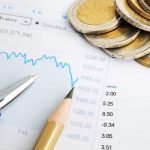The numbers: The cost of goods and services rose a sharp 0.4% in August — the biggest increase in seven months — mostly because of higher gas prices. But inflation more broadly continued to slow.
The increase in the so-called PCE price index over the past year climbed to 3.5% from 3.4%, the government said Friday. The price gauge is the Federal Reserve’s preferred measure of inflation.
The core PCE rate of inflation, however, rose a soft 0.1% last month. Economists polled by The Wall Street Journal had forecast a 0.2% increase
The core rate omits volatile food and energy costs and is viewed by the Fed as a better predictor of future inflation trends.
The rate of core inflation over the past year decelerated to 3.9% from 4.3%, putting it at a nearly two-year low.
Big picture: The rate of inflation is gradually slowing, but the recent downtrend has been interrupted by a sharp increase in oil prices, at least for now.
The Fed is primed to stop raising interest rates if it sees more evidence inflation is on the wane. But it’s likely to keep rates high until well into next year to make sure that price pressures return closer to pre-pandemic levels of 2% or less.
Looking ahead: “With continued low inflation prints and a government shutdown on the horizon, the Fed is likely to stand pat in November, said Omair Shariff, founder of the research firm Inflation Insights, in a note to clients.
“However, assuming a short shutdown so that we can get the data flowing again soon, I still wouldn’t rule out a December hike because core inflation is likely to step up in both the October and November reports.” he added.
Market reaction: The Dow Jones Industrial Average
DJIA,
and S&P 500
SPX,
were set to open higher in Friday trades. The yield on the 10-year Treasury note
TMUBMUSD10Y,
slipped to 4.55%.
Read the full article here




